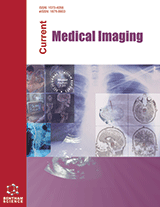
Abstract
Objectives: Since late 2019, Coronavirus Disease 2019 (COVID-19) has spread around the world. It has been determined that the disease is very contagious and can cause Acute Respiratory Distress (ARD). Medical imaging has the potential to help identify, detect, and quantify the severity of this infection. This work seeks to develop a novel auto-detection technique for verified COVID-19 cases that can detect aberrant alterations in traditional X-ray pictures.
Methods: Nineteen separately colored layers were created from X-ray scans of patients diagnosed with COVID-19. Each layer represents objects that have a similar contrast and can be represented by a single color. In a single layer, objects with similar contrasts are formed. A single color image was created by extracting all the objects from all the layers. The prototype model could recognize a wide range of abnormal changes in the image texture based on color differentiation. This was true even when the contrast values of the detected unclear abnormalities varied slightly.
Results: The results indicate that the proposed novel method is 91% accurate in detecting and grading COVID-19 lung infections compared to the opinions of three experienced radiologists evaluating chest X-ray images. Additionally, the method can be used to determine the infection site and severity of the disease by categorizing X-rays into five severity levels.
Conclusion: By comparing affected tissue to healthy tissue, the proposed COVID-19 auto-detection method can identify locations and indicate the severity of the disease, as well as predict where the disease may spread.
Keywords: Auto-detection, SARS-COV-2, chest X-ray images, lung infection, disease severity, ELISA.
[http://dx.doi.org/10.1016/j.chaos.2020.109942] [PMID: 32834576]
[http://dx.doi.org/10.1016/j.cyto.2020.155190] [PMID: 32673995]
[http://dx.doi.org/10.1021/acs.jpcb.0c04553] [PMID: 32559081]
[PMID: 32904528]
[http://dx.doi.org/10.1016/j.idm.2020.08.001] [PMID: 32835146]
[http://dx.doi.org/10.3390/healthcare8020099] [PMID: 32326512]
[http://dx.doi.org/10.1186/s41747-020-00167-0] [PMID: 32592118]
[http://dx.doi.org/10.1016/j.joim.2020.03.004] [PMID: 32307268]
[http://dx.doi.org/10.1016/j.eclinm.2020.100463] [PMID: 32838236]
[PMID: 32880993]
[http://dx.doi.org/10.1148/ryct.2020200322] [PMID: 33778612]
[http://dx.doi.org/10.3390/genes11091002] [PMID: 32858958]
[http://dx.doi.org/10.1007/s00330-020-07032-z] [PMID: 32621237]
[http://dx.doi.org/10.1109/TCSVT.2020.2981530]
[http://dx.doi.org/10.1049/iet-ipr.2019.1481]
 17
17 1
1











